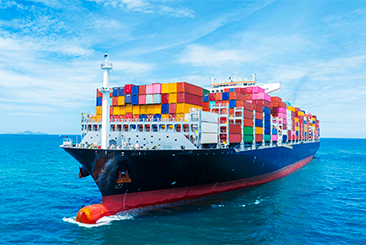


In the context of sea freight shipments , two essential documents regulate the maritime transport of goods : the Bill of Lading and the Sea Waybill (or Express B/L ). Despite their apparent similarities, these documents hold distinct roles and functionalities. Through a detailed analysis presented by Savino Del Bene, this article endeavors to delineate the differences between these critical documents, providing a comprehensive understanding of their respective value in the global maritime trade.
For ocean shipments the Bill of Lading (B/L) can be considered the most important document, it’s the evidence of the contract of carriage between the carrier and the shipper. The Bill of Lading provides proof of loading on board the vessel specified therein (this differentiates it from the “Received for Shipment B/L” which proves the delivery of the goods to the carrier). Upon issue, the maritime carrier therefore certifies that it has loaded the goods onto a specific vessel for shipment and undertakes to deliver them to their destination. The carrier or its agent issues a set consisting of originals (usually three) and non-negotiable copies. The original copies must be duly signed by the master, the carrier or their agents; usually, in daily practice, it is the agent of the carrier who issues and signs most of them. The presentation of the first original will invalidate the validity of the remaining ones.
The legitimate holder of the Bill of Lading has the right to obtain from the carrier the delivery of the goods indicated in the title, the right to dispose of the goods and has the possession of the goods, this is a symbolic possession but equivalent to the physical one.
It’s divisible: if the cargo, even during the voyage, is destined for multiple buyers, it would be possible to divide the B/L into several delivery orders, depending on the number of receivers of the goods.
The fields typically filled out in most Bills of Lading are as follows:
Unlike the Bill of Lading, the Sea Waybill (or Express B/L ) is not a document of title representing the goods. The Sea Waybill, which is always named and never to the order, is issued without original copies: only non-negotiable copies exist.
The Sea Waybill is mainly used to speed up the procedures for the delivery of goods at destination. Typically, it is used when there is a trust relationship between sender and receiver, when goods are shipped between companies of the same group, and by freight forwarders who act as shippers and consignees with their respective offices or support agents at the origin and destination.
The Sea Waybill performs the following functions:
The Sea Waybill:
Considering the different features and functions, the difference between the Bill of Lading and Sea Waybill should already be clear. However, in the following table, we try to make a final comparison between the two documents related to ocean shipments :
| Feature | Bill of Lading | Sea Waybill |
| Document of Title | Yes | No |
| Negotiation | Yes | Not negotiable |
| Release of goods | Physical document needed | The physical document may not be necessary |
| Originals | Yes | No, only non-negotiable copies |
| Bureaucratic procedure | More complex | Less complex |
| Delivery timing | Longer | Shorter |
| Administrative costs | Higher | Lower |
It is evident that the Bill of Lading and Sea Waybill offer different advantages and disadvantages, therefore the choice of the most appropriate document depends on a careful evaluation of the specific needs related to the individual shipment. In this regard, if you need the advice of experts in the field, you can rely on the international shipping services offered by Savino Del Bene.
With great experience in the field of maritime shipping services and more, we are a reliable partner for your business: with us, you can count on customized solutions that perfectly adapt to your needs. Contact your local Savino Del Bene expert.